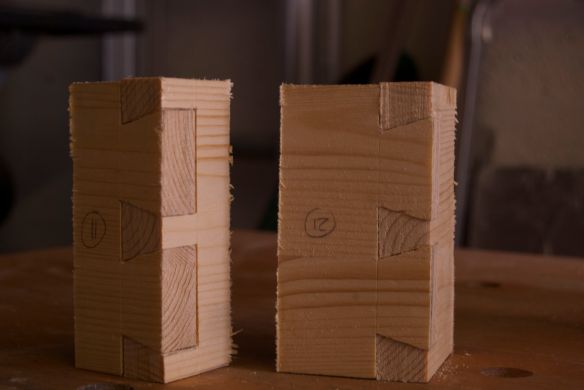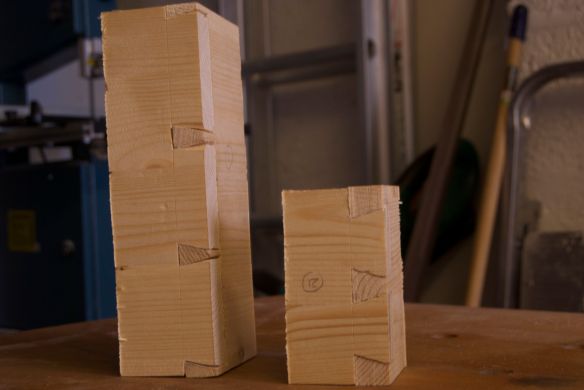And we’re done. After five days of hard work, culminating in a day-long sprint to the finish line, it is hard to believe that that the course is now over. Not that work on the tool chest has ended; I still have the lid to build, milk paint to apply, and the internal gubbins to fit out. But still, the course proper has finished, and after such a phemonenal week there is a lot to absorb, a lot to reflect on.
Work on the tool chests continued apace today, with Chris, Paul and DJ assisting students on the final push. The top and bottom skirts are now glued on to my chest, and the bottom boards have been nailed in place. I didn’t get to start work on my lid, but on an ambitious course like this (where only one of the 18 students left with a completed lid) completing the project within class time is less important than learning the skills and techniques being covered. And after all, I do have the Anarchist’s Tool Chest book to follow when completing the build (I will of course detail the rest of the build on this blog). Despite the fast pace of the day, I did learn some new techniques, most notably overhand ripping, which is something I had previously only read about (but never witnessed).
Doing such an intensive course has a very real and noticeable impact on your basic skills. By mid-week I was much more efficient with my sharpening – getting a razor edge and mirror finish on my chisels after only a couple of strokes. Similarly, sawings and paring accuracy was much greater by the time I had finished dovetailing the case. It is an important reminder that the best (and sometimes only) way to improve so many of the fundamental skills in woodwork is with constant and repeated practice.
Learning how to build the Anarchist’s Tool Chest under the tutelage of Chris Schwarz has been a dream come true – this has been an incredibly important project for me since I first read the book several years ago. And to spend a full week doing intensive joinery with other passionate woodworkers is not only a real joy, but very humbling. The course also provided the opportunity for some very valuable networking, and I hope to be able to announce the outcome of that on here soon.
Once I have finished reflecting on the past five days I will post some further thoughts, but for now, I shall leave you with a rogues gallery from this morning (from left to right, Derek Jones of New English Workshop, fellow luthier Sue Johnson, myself, Chris Schwarz, and Paul Mayon of New English Workshop):














